A talented person is talented in everything. I won't tire of repeating this because as soon as this phrase comes to mind in the context of a specific person, they immediately firmly establish themselves as deserving of that title.
Today, we'll talk to a talented tattoo artist known as Kostik Dry, who brings his unique style to dotwork and ornamental tattooing. A professional from Minsk, Belarus, he will share with us his creative journey, inspiration, and how his wife, Kristina Taylor, became his mentor in the world of tattooing. Get ready for a fascinating immersion into the art, passion, and a unique perspective on tattooing from Kostik Dry.
Tell us a bit about yourself.
- Hello, I'm a tattoo artist from Minsk, Belarus. My main direction and style are dotwork/ornamental.
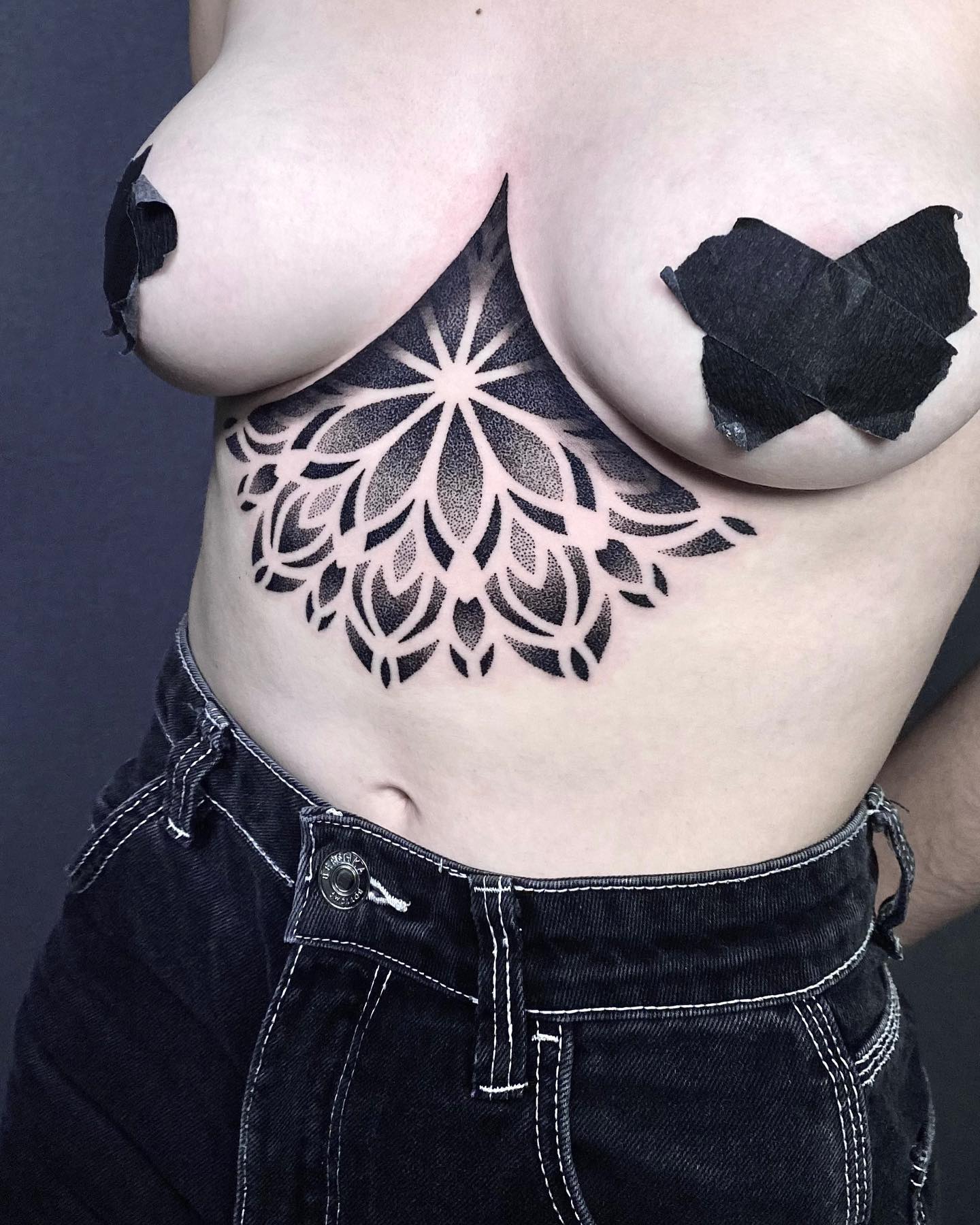
You've only recently started in the tattooing world. Did you decide to follow in Kristina's footsteps or how did it happen?
- Actually, time flies mercilessly fast, and when you asked this question, I decided to check how much time has passed since I started tattooing. The result – it's going to be 3 years very soon (laughs). Speaking of how it all began, Christina was undoubtedly the person who planted the seed in me. I was always extremely skeptical, saying that I had no talent, my hands were in the wrong place, my fine motor skills weren't developed, and I couldn't draw at all! However, she insisted that I give it a try, then taught me everything and provided the most important advice along the way (laughs). I'm immensely grateful to her for thatо.
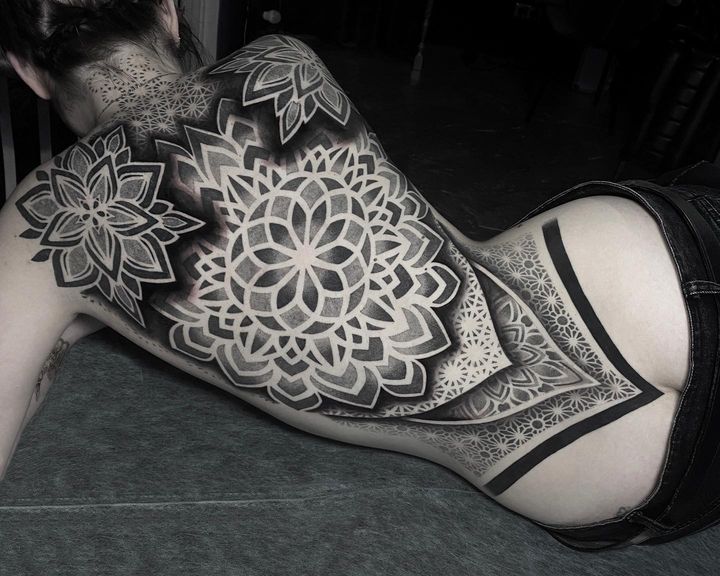
I guess you didn't have to look for a teacher for long?
- I think that throughout this interview, this name will come up often (laughs). Of course, I have a teacher who explained everything, showed me the ropes, and essentially introduced me to the art of tattooing – that's my wife, Kristina Taylor.
Do you have an art education? Can you draw at all?
- Straight to the point... No, I don't have an art education. Essentially, I ended up in the tattooing field by accident. I have a degree in sports. As you can imagine, they don't teach you to draw there either. I could make a flask with a hockey stick, but I never held a brush in my hands (laughs). But drawing itself attracts me; I love classical painting. I enjoy watching when genuinely talented people share their vision on canvas; it's mesmerizing. And when I admire such art too much, I also feel the urge to create something similar (laughs). So, I've made attempts to draw.
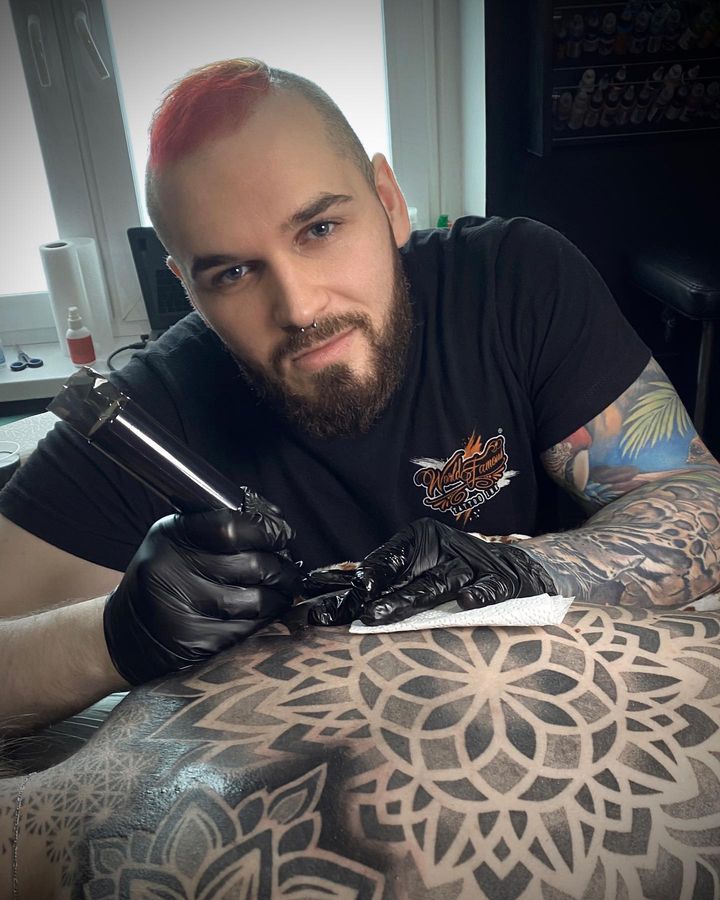
I'll tell you about my first experience. Prior to this, I probably held a brush in my hand during an art class at school, which could be considered close to zero. However, I had a foundation in terms of photography. I used to be professionally involved in photography, and hours spent retouching in Photoshop bore fruit. The process of taking photos and subsequent retouching is somewhat similar to drawing because it is an opportunity to express your vision through the camera, much like an artist does through a canvas. So, I had some knowledge, but it was more like chaos. A piece from here, a piece from there. Everything was not structured. And at one point, Christina literally made me try to draw something (at that time, by the way, I wasn't involved in tattooing yet).
We jointly chose the theme. She explained to me the principles, sequence, how everything works in terms of blending colors, composition, where to start, where to accentuate, etc. The painting with the rose is my first piece, and the whiskey bottle is the third in line. There are a couple of canvases in progress, but I haven't found the time for them yet (laughs). By the way, I still haven't given up on photography and occasionally take photos. Many consider my hobby quite professional, as some of my works have been published in magazines and have even graced the covers of publications like Tattoo Society and Global Tattoo Magazine.
How are your designs born?
- Explaining it here isn't that simple. There are two ways an idea is born. The first is through the client's request, and the second is my own inspiration. With the first point, it's somewhat simpler; the person articulates the idea, specifies the placement, sends some references of works they like, and we discuss options. I find out what exactly resonates with them, and I try to convey that in my project, in my vision. Here, the result is more predictable and controlled, which I undoubtedly like (laughs).
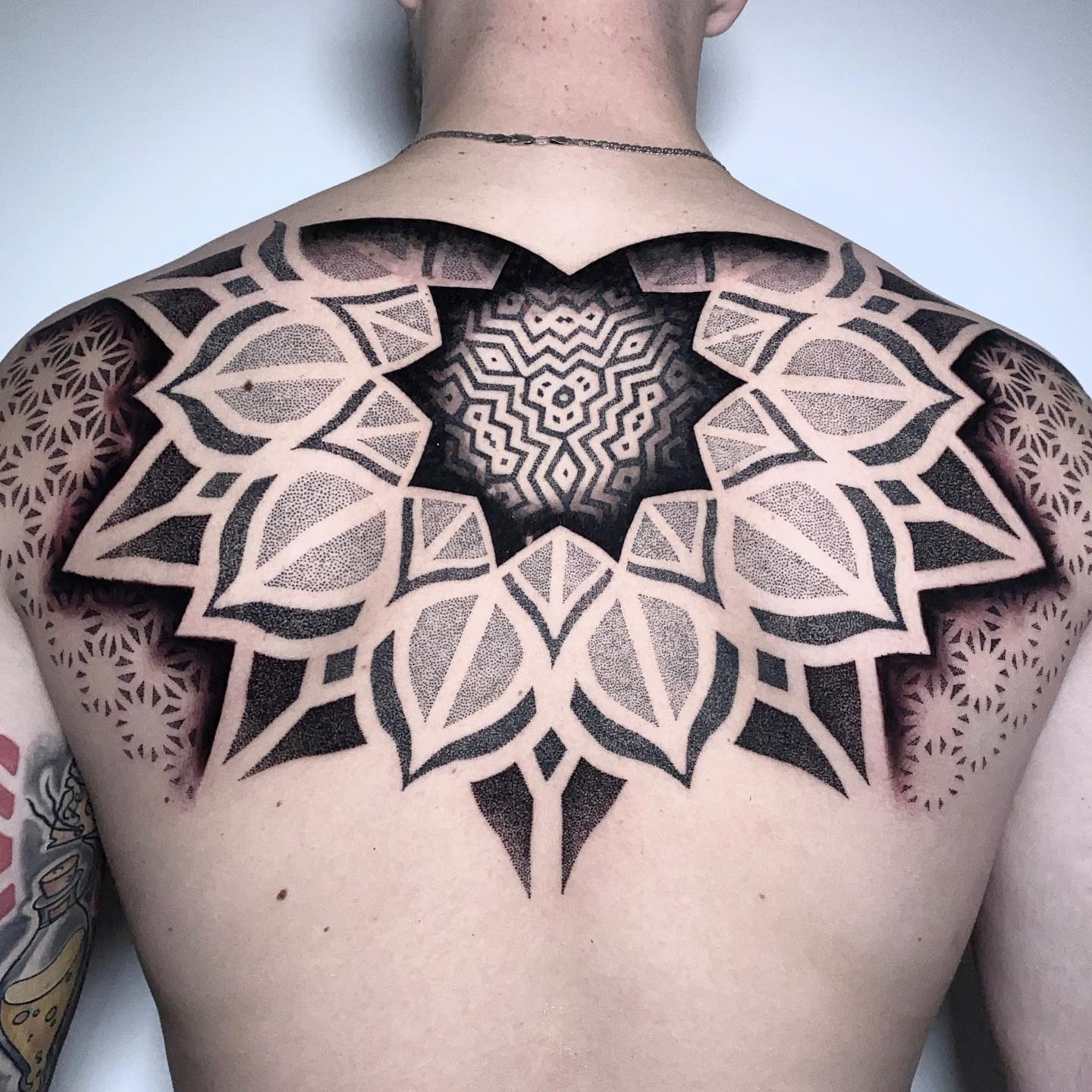
In turn, the second approach to creating a design is maximally spontaneous. Sometimes, I just contemplate a certain part of the body, the structure of muscles, how it moves, and begin to think about how it can be beautifully emphasized from the perspective of a tattoo – highlighting strengths and concealing flaws, all while considering compositional features to craft a unique design.
I often sit and sketch random lines on different body parts, attempting to create a sort of framework for a future project. I determine the composition's center, the primary and secondary elements, the foreground, background, and so on. I continue doing this until I sense something that I really like, something that inspires me and ultimately quickly evolves into a finished project. However, there is another scenario where things don't work out, and I simply make another attempt after some time.
For you, is tattooing a job, art, or something else?
- More like art. Because I strive to do only what I like and find inspiring. I turn down jobs that don't fit within my style. Firstly, without inspiration, nothing good comes out, and secondly, you need to focus on what you want to develop in. Also, I believe that in the pursuit of commercial success, growth is slower because if you take on every job that comes your way, you don't develop your own vision of tattooing but rather try to meet the client's vision.
Why did you choose ornamental tattooing? What attracted you to it more than other styles?
- I like how ornamentation looks on the body; I appreciate how it accentuates anatomy. I enjoy moments of symmetry. I like the process of dotwork itself; it calms me and puts me in a kind of meditation. It resonates with my character.
I must admit, I was surprised by how quickly you adapted to ornamental tattooing and started producing impressive works one after another. Share your secret, how did you manage to do it? Is it a gift or training?
- I think the reason for this is a combination of factors. A good teacher who prevents a beginner from making a bunch of silly mistakes from the very beginning. Also, the opportunity to consult and receive objective (often harsh) criticism from a top-notch master. Plus, working exclusively within one style. And most importantly, I only do what I like and find inspiring. In my opinion, when you strive to do well in every job and give 100% each time, growth is inevitable.
Your works that incorporate colorful accents look very cool and unique. Tell us how this concept was born.
- Thank you! The colorful accent came about quite spontaneously. A couple of people approached me to create Belarusian ornaments. We have many national symbols, and they often contain the color red. After doing my first works with red, I realized that I could try to integrate it into ornamental, large-scale projects. Then I started experimenting with other colors - blue, for example. Currently, I'm in the process of a sleeve with green; hopefully, it will be ready soon.
You have many cool collaborations with Kristina. Have you worked with anyone else in a team?
- So far, not with anyone else, but there is one planned collaboration with a cool artist of worldwide renown. I think many know him – it's Julian Sibert. We'll be working on a back piece together. The concept is already prepared, but I won't reveal it yet. Perhaps we'll make some more changes.
How extensive is your tattoo artist career geography? Where have you already worked, and where do you plan to work in the future? Where do you feel most comfortable working?
- Since I am from Belarus, the main location for my work is, of course, Minsk. Here, I strive to bring all my creative projects to life. Another significant location for me is Germany; we have several friends there with their own tattoo studios, and we often visit them. I appreciate the European approach to tattooing: they are often more open to interesting ideas and large-scale projects.
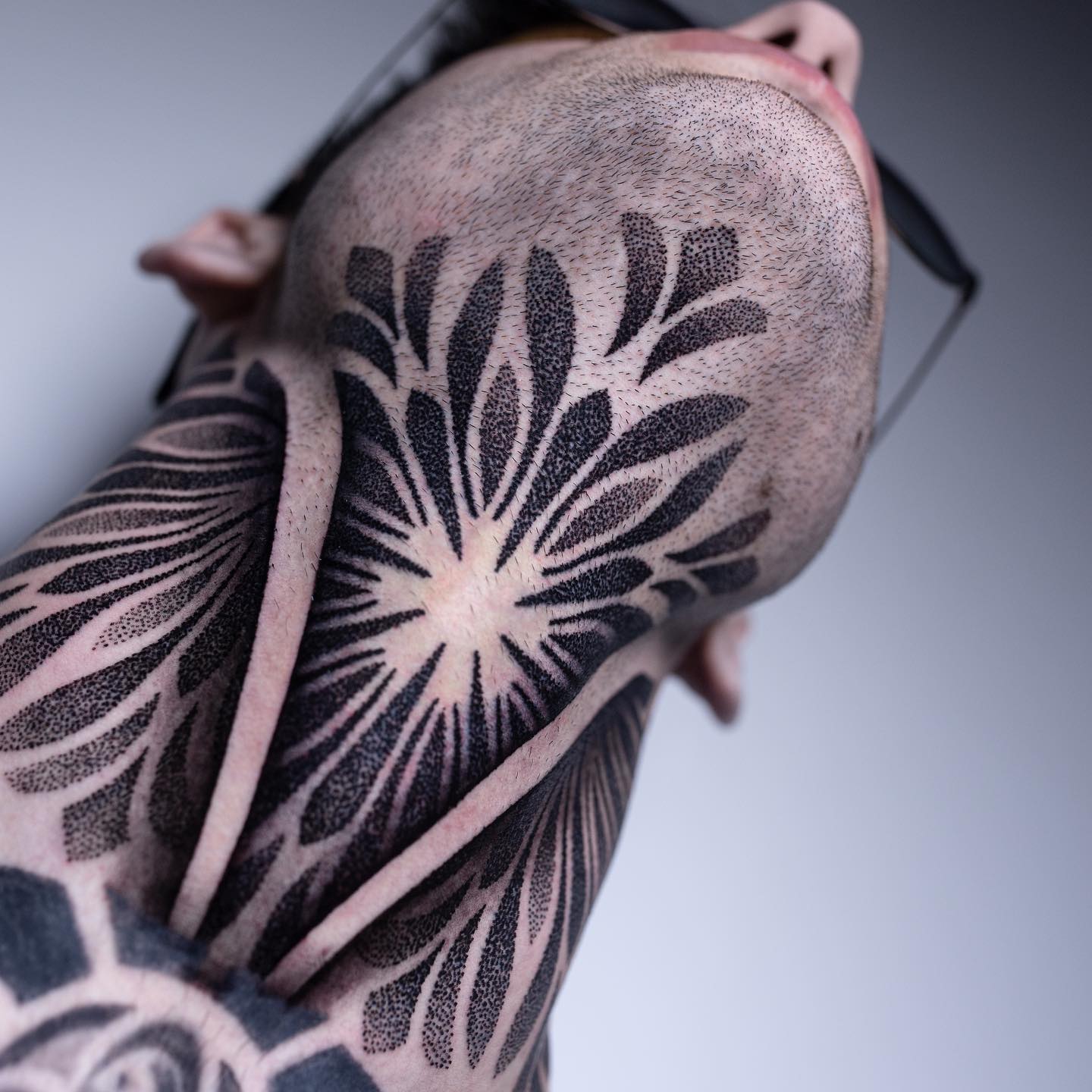
Recently, the United States has become a part of our plans. We have just completed all the necessary paperwork for obtaining the O-1 visa to make everything official. Our goal is not just to come to the country as immigrants, but to feel comfortable and free. We have successfully obtained the visa, and thanks to this, the geography of my tattooing has expanded. Now you can even book a session in the USA.
Where are you currently working?
- After obtaining the visa, we came to the USA, and our main location became Grand Junction, Colorado. Here is the amazing Elysium studio, created by the wonderful and hospitable guys Arlo and Ryan Ashley. This studio could be described in a separate article, as they managed to establish a tattoo studio in a former church, and the building itself is considered a historical landmark of the city. Achieving this was extremely challenging.
What about conventions? Have you already acquired personal awards?
- Unfortunately, I haven't acquired any cool plaques yet. I attribute this to the fact that my development coincided with the pandemic, and essentially all festivals were unavailable. However, various online conventions were accessible. I participated in one of them and won a couple of awards at "Tattoo Awards." These were just electronic certificates that you could print and hang in your studio. I think they are no longer active now, but the idea was cool. Currently, I plan to create several pieces specifically for festivals and exhibitions.
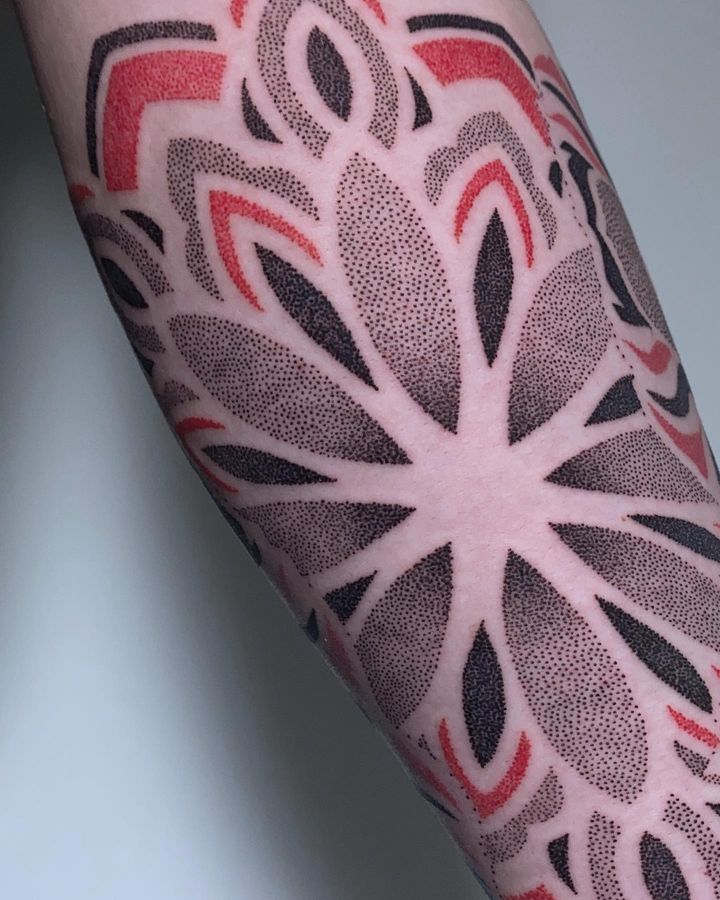
Name your TOP-5 tattoo artists. They can be contemporary or not.
- Oh, I know many amazing artists, and it's really hard to single out anyone among the majority. I'm always deeply impressed when an artist does something extremely challenging, something only a few can achieve. For example, what Kristina (Kristina Taylor) did by tattooing her own neck is mind-blowing. Julian Siebert, who draws symmetry with both hands in a mirror image not just for show but actually uses it in practice. Valentina Ryabova, who can create a portrait tattoo from life. Samokhin (Dmitry Samokhin), who rarely leaves his city for festivals, etc., but everyone knows him. Luke A. Ashley, who specializes only in palm tattoos and has mastered it to a level where the tattoos truly come to life.
So, here's the top as it is. However, it doesn't mean I don't appreciate other artists; I could keep adding to this list.
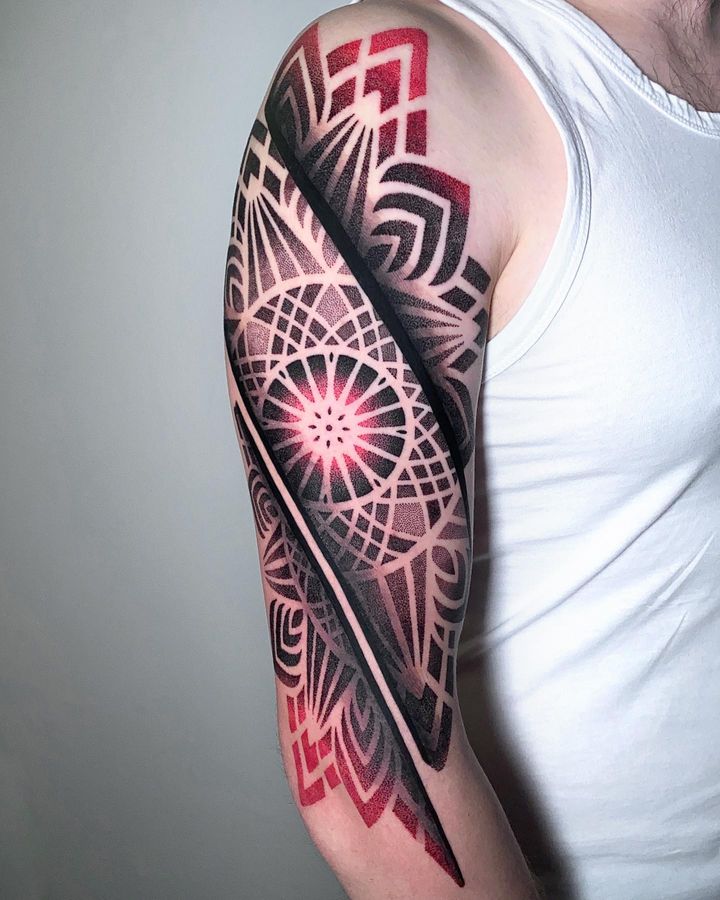
What is most important to you in a tattoo?
- For me, the most crucial aspect is that the tattoo is done with love and soul, and then quality comes in a close second. I want the tattoo to live, to be a part of a person's life. A source of joy, harmoniously integrated into the body, unique, and bringing happiness every time you look at it.
What is your main goal in life?
- My main goal is very simple: to build a home, open my own studio, and create everything for the comfortable future of my family. That's why we travel a lot now, exploring many countries to find a place that feels right. Once we've seen everything, we'll decide on a place to live and kickstart the process.
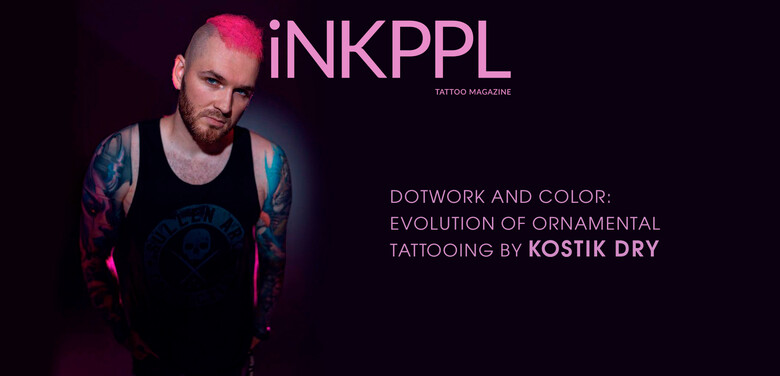

















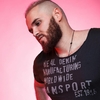
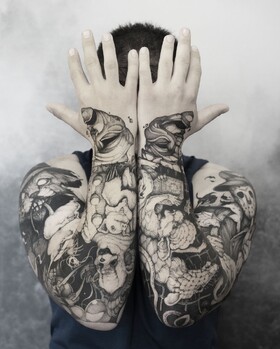
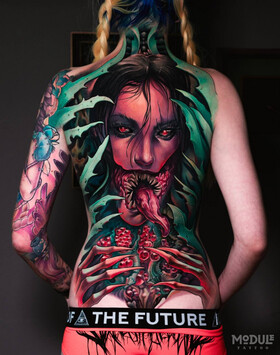

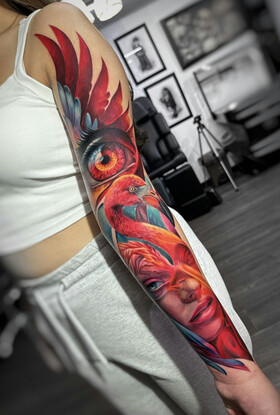
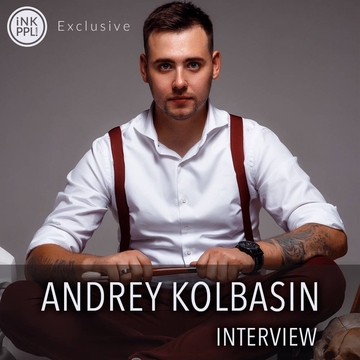
Comments (3)